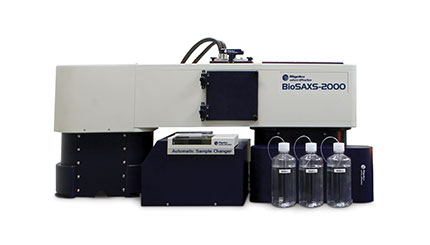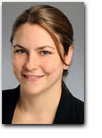|
Rigaku Oxford Diffraction European User's Meeting

The 2017 European User's Meeting will be held within Merton College of the University of Oxford on 22nd to 23rd of March. The meeting will be a great opportunity to join us to discover the latest developments at Rigaku Oxford Diffraction and also hear from the user community about their experiences with their Single Crystal Diffraction systems.
The meeting will have a workshop focus where the latest tips and tricks within CrysAlisPro will be discussed. There will also be a session covering Olex2 which will include examples of how to solve and refine advanced structures. Finally, there will be a feedback session for those of you wishing to stay, where you may promote your ideas to members of Rigaku Oxford Diffraction.
To reserve your place, e-mail Alex.Griffin@Rigaku.com
Crystallography
in the news
January 2, 2017. In research conducted at SACLA, Japan's XFEL (X-ray free electron laser) facility, membrane protein folding has been captured for the first time in 3D and at a single-atom level. Lead author Eriko Nango of Kyoto University explains that, whereas conventional X-ray crystallography only captures static protein structures, SACLA has enabled the team to observe minute changes in protein structures during transformation.
January 3, 2017. UT Southwestern Medical Center scientists have uncovered the chemical process behind anti-cancer properties of a spicy Indian pepper plant called the long pepper, whose suspected medicinal properties date back thousands of years. The secret lies in the chemical Piperlongumine (PL).
January 5, 2017. A symposium to honor a retired Florida State professor who made major contributions to the world of structural biology attracted an unprecedented number of members of the National Academy of Sciences to Tallahassee. The Caspar Structural Biology Symposium, held Jan. 7-8 at Florida State University, honored Donald Caspar, professor emeritus of biological science at Florida State, who turned 90 during the symposium.
January 6, 2017. Japanese researchers have assembled a 144-component ball-shaped "tetravalent Goldberg polyhedron", the largest known synthetic cage made from metal ions and organic molecules. Having produced a smaller version of the hitherto unseen molecular assembly by chance, the University of Tokyo scientists predicted and produced a larger version. That achievement suggests "mathematics could be a useful tool to establish a self-assembly design principle," according to team-member Daishi Fujita, something that chemists have been keen to show.
January 9, 2017. Increasingly, researchers are using computer modeling to attain a more realistic picture of the movement of biomolecules in their natural environment. Prof. Rommie E. Amaro, at the University of California, San Diego (UCSD), discusses the use of computational techniques to predict how enzymes regularly shift their configurations, revealing potential vulnerable areas for drug targeting.
January 10, 2017. Dr. Antoine Buchard, Whorrod Research Fellow at the Centre for Sustainable Chemical Technologies (CSCT), discusses his experience at the 2016 edition of the meeting of inorganic chemists recently appointed (MICRA). The meeting took place at the University of Bath from the 5th to the 7th of September 2016. Since its initiation in 1984, this biennial conference has become an important and powerful networking event for the UK's inorganic chemistry community.
January 11, 2017. Richard Marsh (BS '43), senior research associate in chemistry, emeritus, at Caltech, passed away on January 3, 2017, at the age of 94. Marsh, who went by the name Dick, was a crystallographer and a colleague, mentor, and friend to generations of scientists. His career at Caltech started before World War II, spanned the golden age of structural chemistry led by Caltech???s Linus Pauling, and continued to flourish into the 21st century.
January 11, 2017. Bacterial cells have an added layer of protection, called the cell wall, that animal cells don't. Duke University researchers, led by Dr. Seok-Yong Lee, have now provided the first close-up glimpse of a protein, called MurJ, that is crucial for building the bacterial cell wall and protecting it from outside attack.
January 15, 2017. The Dalian Coherent Light Source, whose completion was announced in Beijing, has a twist that makes it unique: It is the only large laser light source in the world dedicated to the particular range of short-wavelength light called vacuum ultraviolet, which makes it "a new tool for the detection and analysis of molecules undergoing chemical reactions".
January 15, 2017. Researchers from the Laboratoire de cristallographie et sciences des mat??riaux (CNRS/Ensicaen/Unicaen), the Laboratoire catalyse et spectrochimie (CNRS/Ensicaen/Unicaen), and the Academy of Sciences of the Czech Republic have been successful in using electron diffraction to reveal the structure of nanocrystals. Their method is so sensitive that it has even located the position of hydrogen atoms for the first time.
January 17, 2017. Researchers at the University of Manchester, led by Prof. David Leigh, hope their chemically produced, three-strand molecular knot will some day form the foundation for very light and strong materials. The new knot is a circular triple helix only 20 nanometers long, containing only 192 atoms.
January 23, 2017. Chemists at Carnegie Mellon University, from the lab of Professor Rongchao Jin, have demonstrated that synthetic nanoparticles can achieve the same level of structural complexity, hierarchy and accuracy as their natural counterparts – biomolecules. The study, published in Science, also reveals the atomic-level mechanisms behind nanoparticle self-assembly.
Product spotlight: BioSAXS-2000
Small angle X-ray scattering (SAXS) Kratky camera system
Rigaku's BioSAXS-2000 SAXS camera is designed specifically to meet the needs of the structural biologist. Based on a patented two-dimensional Kratky design, the BioSAXS-2000 takes up much less space than a conventional 3-pinhole camera but offers better flux characteristics. Best of all, the BioSAXS-2000 can be mounted on the open port of a Rigaku rotating anode X-ray generator, taking full advantage of existing infrastructure, or it can be mated to a Rigaku microfocus sealed tube X-ray source. The BioSAXS AUTO configuration incorporates two time-saving features: an Automatic Sample Changer for unattended overnight operation and an Automatic Analysis Pipeline based on the world standard ATSAS package from EMBL Hamburg.

For more about BioSAXS-2000 >
Lab in the spotlight
Christine M. Dunham Wins 2017 Margaret C. Etter
Early Career Award
 Christine M. Dunham, Ph.D.
Christine M. Dunham, Ph.D.
Assistant Professor
Department of Biochemistry
Emory University School of Medicine
1510 Clifton Rd., Room G223
Atlanta, Georgia 30322
The Dunham laboratory studies the structure and function of bacterial protein synthesis. The ribosome is a large macromolecular machine that produces all proteins in every living organism and is the target for half of all clinical antibiotics. Therefore understanding how the ribosome is regulated is a fundamental question in biology.
We study both the canonical function of the ribosome as well as the regulation of translation that results from stress. Major projects include understanding how the ribosome maintains the three nucleotide genetic code during elongation and how bacteria regulate translation in response to diverse ranges of stress. We use a number of interdisciplinary approaches including structural biology, biochemistry, and molecular biology techniques.

Useful
link:
Membrane and Protein Biophysics Resources
Membrane Proteins of Known 3D Structure: A current list of membrane protein structures determined by X-ray and electron diffraction with links to the Protein Data Bank and other useful sites.

Created and maintained by the Stephen White Laboratory at UC Irvine.
Selected
recent crystallographic papers
Application of advanced X-ray methods in life sciences. Sayers, Zehra; Avsar, Bihter; Cholak, Ersoy; Karmous, Ines. BBA – General Subjects. Jan2017 Part B, Vol. 1861 Issue 1b, p3671-3685. 15p. DOI: 10.1016/j.bbagen.2016.05.008.
Analysis of RNA structure using small-angle X-ray scattering. Cantara, William A.; Olson, Erik D.; Musier-Forsyth, Karin. Methods. Jan2017, Vol. 113, p46-55. 10p. DOI: 10.1016/j.ymeth.2016.10.008.
Development of tools to automate quantitative analysis of radiation damage in SAXS experiments. Brooks-Bartlett, Jonathan C.; Batters, Rebecca A.; Bury, Charles S.; Lowe, Edward D.; Garman, Elspeth F.; Ginn, Helen Mary; Round, Adam. Journal of Synchrotron Radiation. Jan2017, Vol. 24 Issue 1, p63-72. 9p. DOI: 10.1107/S1600577516015083.
Spatially-localized bench-top X-ray scattering reveals tissue-specific microfibril orientation in Moso bamboo. Ahvenainen, Patrik; Dixon, Patrick G.; Kallonen, Aki; Suhonen, Heikki; Gibson, Lorna J.; Svedström, Kirsi. Plant Methods. 1/9/2017, Vol. 13, p1-12. 12p. DOI: 10.1186/s13007-016-0155-1.
Protein crystallography beamline BL2S1 at the Aichi synchrotron. Nagae, Takayuki; Tabuchi, Masao; Watanabe, Nobuhisa; Yamada, Yusuke; Tomita, Ayana; Matsugaki, Naohiro. Journal of Synchrotron Radiation. Jan2017, Vol. 24 Issue 1, p338-343. 5p. DOI: 10.1107/S1600577516018579.
Bragg coherent diffraction imaging and metrics for radiation damage in protein micro-crystallography. Darmanin, C.; Kirkwood, H. J.; Hoxley, D.; Abbey, B.; Coughlan, H. D.; Phillips, N. W.; Clark, J. N.; Vine, D. J.; Hofmann, F.; Harder, R. J.; Maxey, E. Journal of Synchrotron Radiation. Jan2017, Vol. 24 Issue 1, p83-94. 11p. DOI: 10.1107/S1600577516017525.
Dynamic X-ray diffraction sampling for protein crystal positioning. Scarborough, Nicole M.; Zhang, Shijie; Newman, Justin A.; Sheedlo, Michael J.; Chowdhury, Azhad U.; Das, Chittaranjan; Simpson, Garth J.; Godaliyadda, G. M. Dilshan P.; Ye, Dong Hye; Bouman, Charles A.; Kissick, David J.; Fischetti, Robert F.; Buzzard, Gregery T. Journal of Synchrotron Radiation. Jan2017, Vol. 24 Issue 1, p188-195. 7p. DOI: 10.1107/S160057751601612X.
Purification, preliminary X-ray crystallography and biophysical studies of triose phosphate isomerase-β-globin subunit complex. Wahiduzzaman, null; Dar, Mohammad Aasif; Amir, Mohd.; Islam, Asimul; Hassan, Md. Imtaiyaz; Ahmad, Faizan. International Journal of Biological Macromolecules. Jan2017 Part B, Vol. 94, p746-753. 8p. DOI: 10.1016/j.ijbiomac.2016.10.070.
Enhancing primary processing for small-angle X-ray scattering. Wei, Yanru; Li, Zhihong. Instrumentation Science & Technology. 2017, Vol. 45 Issue 1, p22-34. 13p. DOI: 10.1080/10739149.2016.1205084.
An endstation for resonant inelastic X-ray scattering studies of solid and liquid samples. Peters, Hans-Bernhard; Hahn, Ulrich; Gonschior, Josef; Viefhaus, Jens; Yin, Zhong; Techert, Simone; Rajkovic, Ivan; Mierwaldt, Daniel; Jooss, Christian. Journal of Synchrotron Radiation. Jan2017, Vol. 24 Issue 1, p302-306. 4p. DOI: 10.1107/S1600577516016611.
Structural characterization in mixed lipid membrane systems by neutron and X-ray scattering. Kiselev, Mikhail A.; Lombardo, Domenico. BBA – General Subjects. Jan2017 Part B, Vol. 1861 Issue 1b, p3700-3717. 18p. DOI: 10.1016/j.bbagen.2016.04.022.
Finding a New Crystalline Sponge from a Crystallographic Database. Inokuma, Yasuhide; Matsumura, Kazuki; Yoshioka, Shota; Fujita, Makoto. Chemistry – An Asian Journal. 1/17/2017, Vol. 12 Issue 2, p208-211. 4p. DOI: 10.1002/asia.201601551.
OH cleavage from tyrosine: debunking a myth. Bury, Charles S.; Garman, Elspeth F; Carmichael, Ian. Journal of Synchrotron Radiation. Jan2017, Vol. 24 Issue 1, p7-18. 11p. DOI: 10.1107/S1600577516016775.
Cross-Validation of Data Compatibility Between Small Angle X-ray Scattering and Cryo-Electron Microscopy. Kim, Jin Seob; Afsari, Bijan; Chirikjian, Gregory S. Journal of Computational Biology. Jan2017, Vol. 24 Issue 1, p13-30. 18p. DOI: 10.1089/cmb.2016.0139.
Designing a new cocrystal of olanzapine drug and observation of concomitant polymorphism in a ternary cocrystal system. Nanubolu, Jagadeesh Babu; Ravikumar, Krishnan. CrystEngComm. 1/14/2017, Vol. 19 Issue 2, p355-366. 12p. DOI: 10.1039/c6ce02227h.
Structural and molecular docking studies of biologically active mercaptopyrimidine Schiff bases. Kirubavathy, S. Jone; Velmurugan, R.; Karvembu, R.; Bhuvanesh, N.S.P.; Enoch, Israel V.M.V.; Selvakumar, P. Mosae; Premnath, D.; Chitra, S. Journal of Molecular Structure. Jan2017, Vol. 1127, p345-354. 10p. DOI: 10.1016/j.molstruc.2016.07.082.
Q|R: quantum-based refinement. Zheng, Min; Reimers, Jeffrey R.; Waller, Mark P.; Afonine, Pavel V. Acta Crystallographica Section D: Structural Biology. Jan2017, Vol. 73 Issue 1, p45-52. 7p. DOI: 10.1107/S2059798316019847.
New investigations of the guanine trichloro cuprate(II) complex crystal. Fabijanic, Ivana; Matkovic-Calogovic, Dubravka; Pilepic, Viktor; Ivani??evic, Irena; Mohacek-Grošev, Vlasta; Sankovic, Krešimir. Journal of Molecular Structure. Jan2017, Vol. 1128, p317-324. 8p. DOI: 10.1016/j.molstruc.2016.08.069.
Dynamic X-ray diffraction sampling for protein crystal positioning. Scarborough, Nicole M.; Zhang, Shijie; Newman, Justin A.; Sheedlo, Michael J.; Chowdhury, Azhad U.; Das, Chittaranjan; Simpson, Garth J.; Godaliyadda, G. M. Dilshan P.; Ye, Dong Hye; Bouman, Charles A.; Kissick, David J.; Fischetti, Robert F.; Buzzard, Gregery T. Journal of Synchrotron Radiation. Jan2017, Vol. 24 Issue 1, p188-195. 7p. DOI: 10.1107/S160057751601612X.
Recent experimental and theoretical studies on protein crystallization. Nanev, Christo N. Crystal Research & Technology. Jan2017, Vol. 52 Issue 1, pn/a-n/a. 12p. DOI: 10.1002/crat.201600210.
Structural consistency analysis of recombinant and wild-type human serum albumin. Cao, Hui-Ling; Sun, Li-Hua; Liu, Li; Li, Jian; Tang, Lin; Guo, Yun-Zhu; Mei, Qi-Bing; He, Jian-Hua; Yin, Da-Chuan. Journal of Molecular Structure. Jan2017, Vol. 1127, p1-5. 5p. DOI: 10.1016/j.molstruc.2016.07.057.
Book review
A Survival Guide to the Misinformation Age: Scientific Habits of Mind
By David J. Helfand, Columbia University Press, ISBN: 9780231168724
Longtime Columbia University astronomy professor David Helfand's Survival Guide seems even more pertinent now, in the wake of the recent presidential election and the fake news epidemic, than it was almost a year ago at the time of its first publication. Helfand's book certainly isn't a "how to determine if the news you are reading is fake" guide, but many of the principles of scientific discovery he explores could certainly be applied to the aforementioned dilemma.
Two of the most useful parts of the book didn't fall under the auspices of the thirteen numbered chapters, but within two "Interludes." The first, on numbers, gave a good introduction to numbers, in the sense that many, many people—even well-educated people—are what you might call "innumerate" (that is, the number equivalent of illiterate). As such, when given certain kinds of number-based information, some people cannot immediately recognize when the math is off. It???s always important when dealing with number-related information to do simple "sanity checks" to ensure that the information is accurate and not off by a power of 10 (or even 10,000 or 10,000,000). For example, if you read a report that 20 billion illegal immigrants came to the US in 2016, you should pause before you believe it. After all, there are only ~7 billion people on the planet as a whole, so, the numbers really just don't make sense. That's an extreme example, but you can see the point he is trying to make.
The second interlude, on logic and language, was also particularly helpful, though hard to top the everyday usefulness of that on numbers.
Interludes aside, the chapters were incredibly useful as well. Two of the most pertinent chapters, one on statistics and the other on the relationship (or lack thereof) between correlation and causation, address some of the most critical issues involving data interpretation facing our world today. The fact is, information is power, and data is information in its purest, rawest form. Being able to understand and interpret data accurately and efficiently can be a daunting task, but it is an important one. The sheer quantity of fake news that stems from inaccurate data analysis likening correlation to causation is astounding.
Helfand's prose certainly isn't aimed at a particularly broad audience, but it serves as a helpful reminder, especially for scientists and the like who ought to know better, to always check the source before believing any information.
Review by Jeanette S. Ferrara, MA
|

